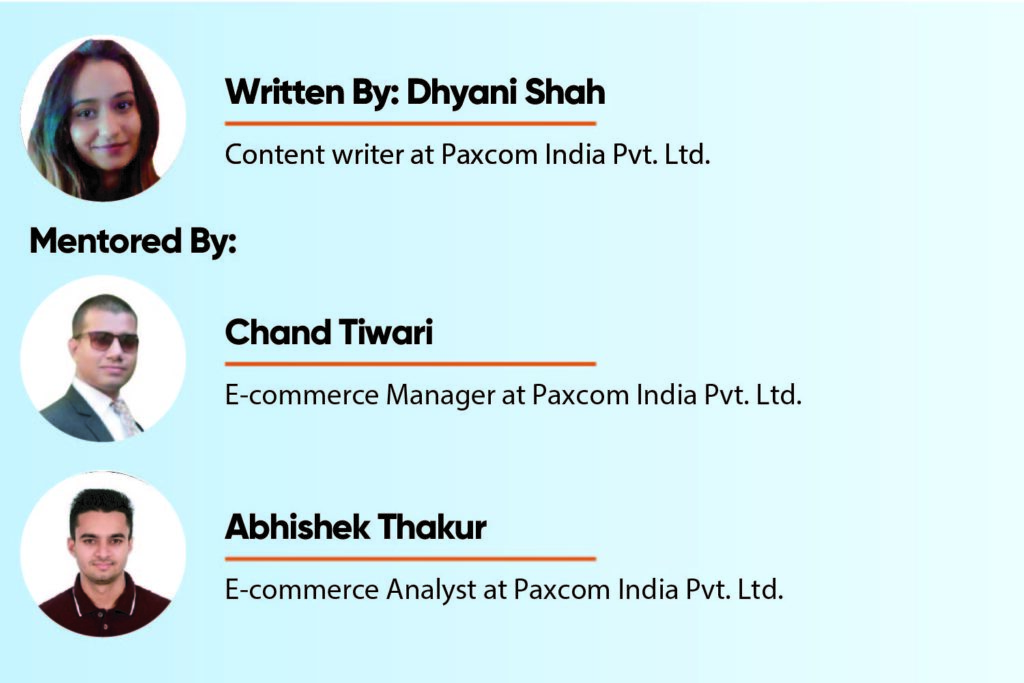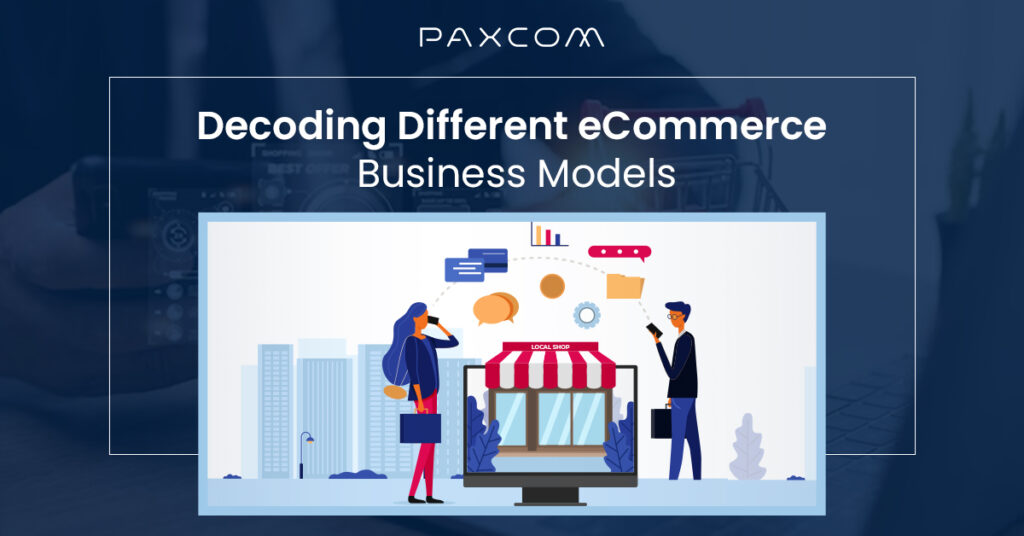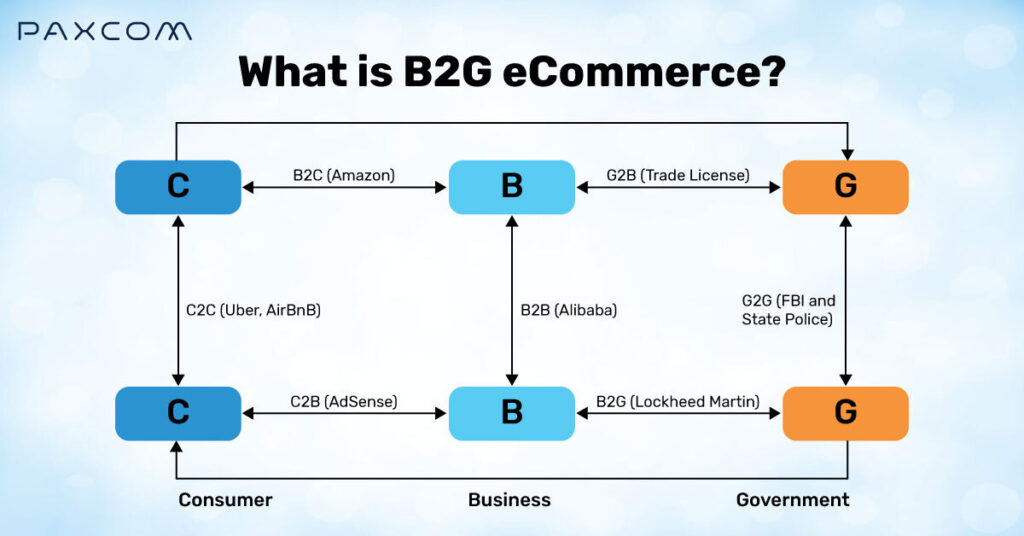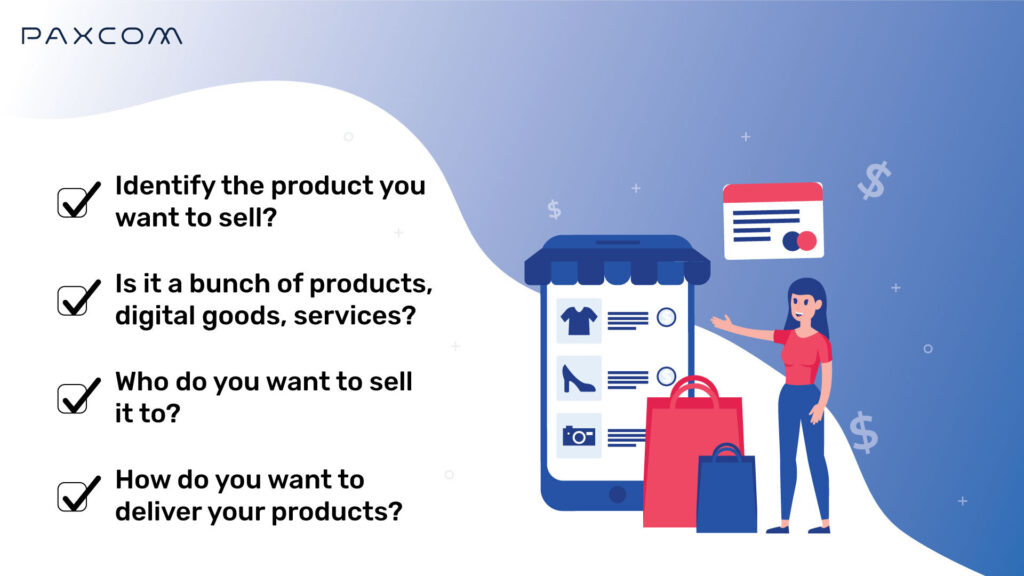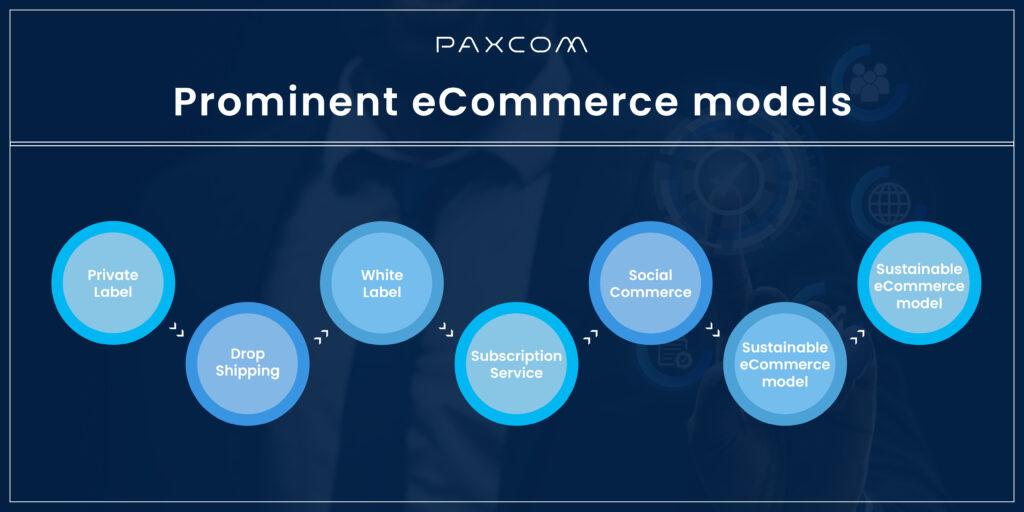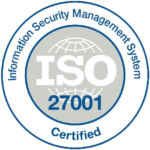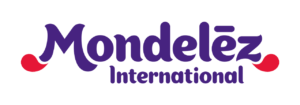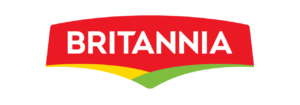Different eCommerce business models are flourishing, with retail sales expected to account for 23% and global eCommerce revenue expected to reach $5.5 trillion by 2027. Markets are thriving, and so are digital users. The user penetration rate will hit 63.2% by 2028. Amid all this, getting excited or having high hopes is usual, but it is imperative to learn the basics for a smoother operation.
When starting an online store, choosing and implementing the correct eCommerce business model may have a higher learning curve than you anticipate, especially if you are a novice to it. Knowing which model best matches your target niche, resources, and capabilities is your best chance of success. In this blog, we will explore the various eCommerce models and see which one suits your business the best.
Table of Contents
Let’s take a look at the six main e-Commerce models
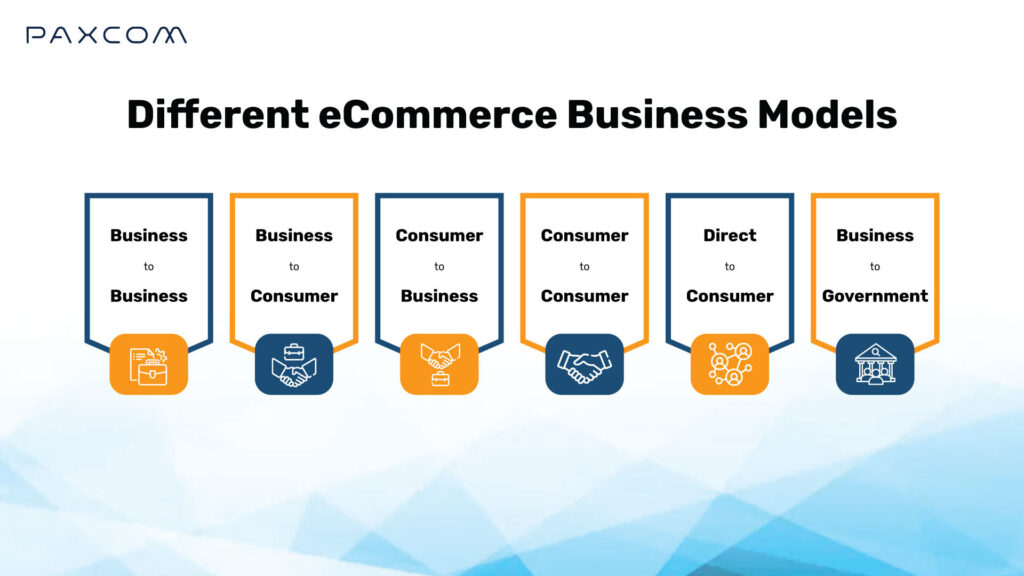
1. Business-to-Business (B2B)
The business-to-business e-commerce model allows the exchange of goods and services between two companies or organizations (wholesalers, distributors, etc.) This type of online selling is more complex than business-to-customer selling. While businesses may not be willing to share their products with just anyone, they can benefit by selling them in bulk to other companies for resale purposes.
The benefits of the B2B eCommerce model are as follows:
- Lower risk: Sell products to businesses that are less likely to cancel orders.
- Increase your profit margin by selling at wholesale prices.
- Selling globally means expanding your reach and opening up your business to new customers.
- Use analytics to know more about your customers.
2. Business-to-Consumer (B2C)
The B2C model of eCommerce is the standard model that most individuals are familiar with. Consumers purchase products directly from online retailers. In contrast to B2B, B2C is as simple as ordering a book or camera online.
In the business-to-consumer (B2C) e-commerce model, sellers directly sell their products to consumers via their website or an app. They do not have any physical retail space from which to sell their products. This is one of the main reasons why B2C businesses can quickly scale up and reach a more extensive customer base.
The benefits of the B2C eCommerce model include:
- Increased customer satisfaction and lower delivery time: the product is in the hands of the customer in a very short time, as low as 15 minutes. The product reaches the customer quickly.
- Increased productivity: the business is less dependent on the company’s physical location. It can open a store in a few minutes.
- Convenience: The customer has the product at their disposal 24 hours a day, seven days a week. Customers can order as many times as they want.
3. Consumer-to-Business (C2B)
A consumer-to-business eCommerce business model allows consumers to provide a service to manufacturers and distributors. Affiliate marketing is the best example of this. A consumer posts their service, and a brand approaches them. This gives consumers the power to name their prices and allows businesses to meet their needs directly.
The benefits of the C2B eCommerce model include:
- Having your customers market for you allows you to reach a wider demographic.
- It increases awareness and loyalty, especially if word of mouth is coming from the consumer.
- This feature gives consumers more opportunities to provide feedback, so brands can learn what is popular and in demand.
4. Consumer-to-Consumer (C2C)
It is an online marketplace that allows consumers to buy and sell products directly from one another. The consumer-to-consumer eCommerce model connects buyers with sellers, eliminating the need for a middleman like Amazon or eBay. This is also known as the peer-to-peer marketplace model. Consumer-to-consumer-connected platforms earn profits by charging listing and transaction fees.
C2C, on the other hand, extensively deals with third-party businesses to facilitate transactions, protect consumers, and ensure quality control.
The benefits of the consumer-to-consumer (C2C) eCommerce model include:
- The consumer-to-consumer e-commerce model allows people the freedom to buy what they want when they want.
- Unlike other models, the consumer-to-consumer model allows the seller to sell the product directly to the consumer without any markup costs or mediators.
- Buyers have the power to: The consumer-to-consumer model allows the consumer to have the power to buy what they want at the price they want. This is unlike other models where the seller has the power.
- Cheaper prices: The cost of products is more affordable because there are no middlemen to take the profit margin.
5. Direct-to-Consumer (D2C)
The model is similar to B2C, as the consumer is the end goal in both practices. However, D2C eliminates the middlemen and sells its product directly to the customer through its website.
D2C is the fastest-growing segment in the eCommerce industry and will exceed US $100 billion by 2025 in India (Statista).
The benefits of the direct-to-consumer (D2C) eCommerce business model include:
- Enhanced customer experience: the customer is the king; D2C brands get to embrace the concept at a digital level through first-hand customer data to crack customers’ preferences and form consumer-centric strategies.
- Numerous Market Opportunities: Brands practice a hybrid online and in-store model. D2C business brings multiple expanding opportunities; the brand can either decide to go global or start its offline stores locally. Brands also have the leverage to introduce new product lines; they can offer tests and trials on a smaller scale, gather customer feedback, and work on improvising them.
Challenges and Best Practices:
While D2C presents exciting opportunities, it does come with challenges. For instance, D2C brands must contend with fierce competition from established retailers and ensure smooth order completion and fulfillment. To overcome these hurdles, D2C brands should prioritize:
- Personalization: Offering highly customized products and services to cater to each customer’s unique needs.
- Customer reviews: Encourage positive word-of-mouth by soliciting honest feedback from satisfied customers.
- Optimal customer experience: Ensure a seamless shopping experience, from browsing to ordering and receiving the product.
- Social media engagement: Engage with customers on popular social media platforms to build a community around the brand.
- Mobile optimization: Design mobile-responsive websites and apps to accommodate the growing number of smartphone users.
- Data analysis: Collect and analyze customer data to inform decision-making and drive continuous improvements.
6. Business-to-Government (B2G)
The process involves selling the products or services to the end consumer, i.e., government organizations or institutions. The buyer (government agencies) is dependent on the seller for, let’s say, office supplies, IT & software, institution supplies, and consulting.
- One of the major benefits of the vertical is that the business has a stable customer base through procurement processes, contracts, and grants.
- The government offers high-end projects, resulting in excessive financial security.
The procurement process is done through websites where government agencies upload their proposals for businesses to bid on.
Marketing Strategies and Considerations for B2G eCommerce model
- Visibility: Establish a strong online presence to enhance visibility and credibility.
- Understanding Regulations: Familiarize yourself with government procurement regulations to navigate the bidding process effectively.
- Bidding Process: Prepare bids meticulously, ensuring compliance with all requirements for successful contract acquisition
Following the checklist above will help you decide which eCommerce business model is best for you. Paxcom can assist you with identifying the perfect business model for your business’ sustainable and profitable growth.
Let’s now turn our attention to the next step of the process!
How are you sourcing your products?
1. Private Label
Private labeling refers to third-party manufacturing under a contract but selling under the retailer’s brand name. The retailer gets to specify everything about the product, from its packaging to its name, label, and logo. In this case, the retailer paid the manufacturer to produce and deliver the products to its store with the complete specifications.
- Private label products are not only one of the best ways to make money online, but also one of the easiest. You are your own boss; you own your future and your success!
- Private label products are the best way to build your own brand with your own unique personality.
- You can set your own margin. For example, you can sell the product for $30, but it may be sold for $50 on other platforms. If you choose this method of selling, you get to experiment with premium pricing.
2. eCommerce White Label
The term white-label refers to products or services that are initially provided by one company but are then rebranded to appear as though another company is providing it. White labels on packaging, which the marketer can fill in with his trade dress, are where the name comes from. The manufacturer will create the white label product being sold but will not brand it. Afterward, the other party (your company) will need to repackage, brand, market, and sell the product.
There is a difference between white labeling and private labeling. In the case of a private-labeling partnership, the manufacturer creates an exclusive product for a specific retailer.
With white labeling, you usually have to purchase a minimum quantity of products, which also means you have to pack, store, and ship them.

3. Drop Shipping
Drop-shipping has recently gained momentum, and thanks to the internet surge, it is quite a convenient model to reach a broader customer base. People seem to overcomplicate drop shipping when, in essence, it is just selling items that you don’t see or touch. You don’t buy anything upfront and are only monetarily invested once someone purchases from you.
After purchasing an item, you simply go to your supplier, buy the item for less, and put the buyer’s address as the shipping address. Most importantly, you get to keep the profits in between.
Among the risks of the drop-shipping eCommerce model are:
- When a supplier lacks quality control, it can be burdensome to deal with customers’ complaints and may harm the reputation of the company
- Although the supplier manages the fulfillment process, the business owner must still track deliveries
- As drop shipping is open to all, competition is fierce.
4. Wholesaling
Wholesale is the method of selling products in large quantities to retailers at a discount. This business model has become popular in e-commerce due to low startup costs, high turnover potential, minimal marketing, and minimal handling time. Wholesaling used to be mostly a B2B business practice. But thanks to the internet, anyone can offer wholesale as a C2B or B2C practice. You are involved in wholesale eCommerce if you purchase a product in bulk from a go-between who obtains it from the manufacturer.
The benefits of the wholesale eCommerce business model include
- Since this model involves large quantities of products, it is only apparent that it will increase your order volumes.
- It is easy for wholesalers to enter new markets and reach a large customer base by leveraging existing retailers’ vast customer bases.
5. Subscription Service
Subscription services are e-commerce models that allow customers to pay a once-off fee for access to consumable goods or services over a period of time. The first step is creating the product or content your subscribers will consume. Next, you create an auto-renewal process, where payment is collected regularly, typically monthly. Finally, you have to deliver the item or content to your subscribers on time so they don’t forget about you!
The best examples are: “Healthify me” and “Cult fitness.” Where a customer subscribes to a nutritional meal and gets it home delivered every month.
The benefits of the subscription service eCommerce business model include:
- Owners can reduce order abandonment rates and maintain high customer retention and loyalty.
- Owners can plan inventory and delivery in advance.
- Owners can enjoy high margins and lower inventory risks.
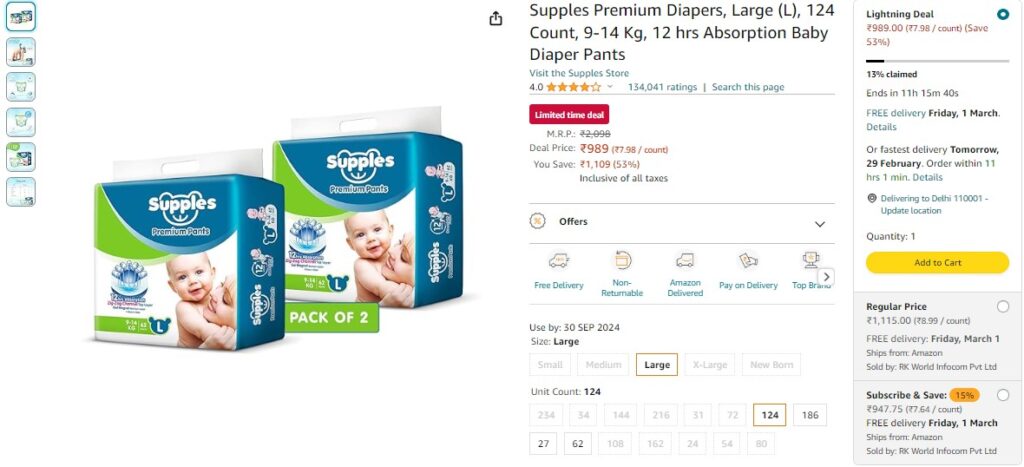
Amazon’s subscribe & save program is also an example of a subscription model. In addition to attracting repeat business and producing dependable business outcomes at a reduced user acquisition cost, the model enables users to save up to 15% per subscription.
6. Social Commerce
The age of social media has given rise to many new business models. One of the most popular ones is the Social Commerce Model. Social Commerce allows you to create a two-way conversation with your customers, where they can comment on pictures, ask questions, and even pay for products. This means you must maintain a high level of quality service and respond quickly to any queries or comments your customers may have.
The medium is set to alter the retail space in India altogether as it offers direct communication between the brand and customers through social media platforms. Read why social commerce is imperative for your business.
Several social commerce platforms in India follow the reselling model, for example, Meesho or CityMall. Suppliers list their product catalogues on the app, and entrepreneurs and businesses connect with them via Instagram, Facebook, and WhatsApp for relevant purchases.
7. Sustainable eCommerce Model
A sustainable e-commerce model is a concept that combines the traditional e-commerce model with the principles of sustainable development to create an eco-friendly and secure business environment for all stakeholders. This model helps achieve sustainability goals such as reducing the carbon footprint, increasing profit margins, increasing sales, and creating a globally competitive business environment.
It’s a trend gaining traction these days as more and more customers demand transparency from brands, especially regarding how they source their products. The most commonly used sustainability practices in the e-commerce industry include reducing product packaging, creating reusable products, minimizing pollution and energy consumption, etc.
We know that following CSR reports is critical because they show your impact on the environment and build legitimacy for your brand.
Conclusion
Developing a successful eCommerce business requires many factors to be considered and well thought out. This is a timely and detailed process that involves a lot of research and consideration. A clear understanding of your eCommerce business model puts you ahead of the competition. Your marketing efforts and business model can be fine-tuned to maximize revenue once you have identified your target market and the suitable business model you need.
We hope that you will be able to learn from all the models listed above and make the best decision for your company. This is the only way you will find a model that is tailored to your company’s needs and not a generic, cookie-cutter approach.
If you still have more questions regarding selecting the suitable model that works for you, contact our eCommerce experts at info@paxcom.net.
